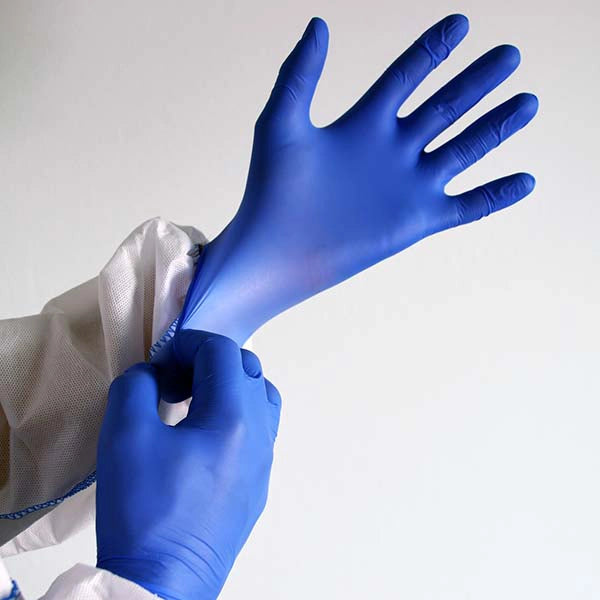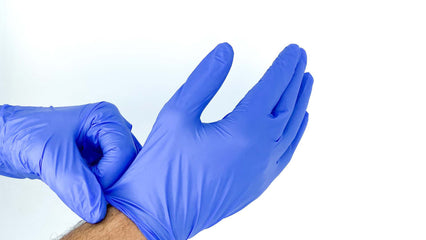Due to the sensitivity and hazardous nature of their work, healthcare professionals, doctors, dentists, and other medical practitioners need to use durable, disposable gloves. They need to replace gloves after each patient or procedure, to ensure their own and their patients' safety.
But medical practitioners are far from the only ones who wear disposable gloves. People in many other fields, including the industrial sector, can benefit from single-use hand protection.
To make sure that professionals in every industry can choose the right types of gloves, they are categorized and classified with varying grades, such as medical or industrial grade. There are also subtler distinctions within those grades — for example, some medical-grade gloves are suitable for surgeries, while others are considered exam-grade gloves better for non-invasive procedures.
Each grade of gloves pertains to different levels of protection against abrasion, bodily fluids, pathogens, and more. These classifications help all disposable glove users choose the right types of gloves to ensure their and their patient’s protection.
But are industrial-grade and medical gloves really that different? Let’s find out everything you need to know about medical-grade vs industrial-grade gloves.
Industrial vs. Medical Grade Gloves: Definitions
What exactly do we mean when we say a box of gloves is medical or industrial grade?
Medical Grade Gloves

"Medical grade" is a standard set by the U.S. Food and Drug Administration (FDA). It's based on the acceptable quality level (AQL), which refers to the number of defects in a batch of gloves.
According to FDA guidelines, all medical gloves should have an AQL of 2.5 or less to be categorized as safe for medical and surgical procedures. When subjected to standard quality testing, no more than 2.5 pairs of gloves in a batch of 100 can have flaws like rips or pinhole leaks. This helps to minimize the risk of exposure to germs, body fluids, and other materials that could put healthcare workers at risk.
Gloves for doctors and nurses must also be powder-free. While it can be easier to put on and take off powdered gloves, the powder can also carry allergens through the air or contaminate wounds. For the safety of both patients and care providers, the FDA mandates that medical professionals should use only powder-free gloves.
Industrial Grade Gloves

Compared to medical gloves, the standards governing industrial grade gloves aren't as strict. Since there's less risk of disease transmission in non-medical settings, the FDA doesn't require that industrial gloves meet a specific AQL. However, most manufacturers ensure that their industrial grade gloves have an AQL 3-4 or better.
Industrial gloves are designed to withstand heavy tasks and tend to have high levels of cut and puncture resistance. They're often quite a bit thicker than exam gloves.
Industrial vs. Medical Grade Gloves: Types

Medical and industrial-grade gloves come in many different styles and materials, some offering different levels of quality and protection.
Exam Grade vs. Surgical Grade Gloves
A common alternative term for medical-grade gloves is "exam-grade gloves" or "examination gloves". Both refer to disposable gloves with an AQL of 2.5 or lower. The reason some people say "exam gloves" is to distinguish them from surgical-grade gloves.
Both surgical and examination gloves can be considered types of medical-grade gloves, but surgical gloves have some additional specifications. Single-use gloves for invasive procedures like surgery have to meet an AQL of 1.5 — an even stricter standard than exam gloves.
Surgeons also generally use sterile medical gloves that have been thoroughly disinfected and sealed in individual wrappers. This helps to minimize the risk of germs or other materials winding up in an open wound.
Exam Gloves vs. Chemotherapy Gloves
Another specialized type of medical-grade gloves is the kind used in chemotherapy for cancer. The medications used in these treatments are extremely toxic and often require special precautions. Doctors performing chemotherapy should use gloves that have been specifically tested and found to provide a protective barrier against these drugs.
Disposable vs. Reusable Industrial Grade Gloves

The durability and features of industrial gloves depend on the materials used. Some are designed to be worn once and then discarded, often for use in messy tasks or those that require lots of dexterity. Here are a few different types of disposable industrial-grade gloves:
- Latex gloves are very flexible and form-fitting, with great tactile sensitivity.
- Nitrile disposable gloves protect the wearer from acids and oils, and offer better puncture resistance than latex.
- Polyvinyl chloride gloves are inexpensive, waterproof, and easy to change.
- Neoprene gloves have high chemical resistance and hold up under tough environmental conditions.
Other industrial-grade gloves are reusable rather than disposable. They're designed for longevity and durability but generally cost much more to replace. Here are some common types of reusable industrial gloves:
- Kevlar gloves offer superior tear and cut resistance ideal for those that handle sharp objects or glass.
- Butyl rubber gloves are more expensive but very effective for protecting against liquids and chemicals.
- Vibration-resistant gloves cushion against the shaking from implements like drills and jackhammers.
- Aluminum thermal-proof gloves offer protection against extreme temperatures.
Industrial vs. Medical Grade Gloves: Uses

What kinds of scenarios and workplaces are best for industrial gloves, and which ones call for medical gloves?
Common Uses For Medical Grade Gloves
At first, medical-grade gloves were designed and created for non-surgical medical applications such as physical examinations — that's why they are also called examination gloves. But their usage has expanded to encompass a wide range of other medical tasks.
Possible uses include:
- Handing out medication
- Performing vaccinations and other injections
- Administering first aid
- Transporting patients
- Cleaning up blood
- Bandaging wounds
- Drawing blood
- Tattooing
- Checking vital signs
- Changing IVs
Anytime you are handling biohazards or harsh chemicals in a medical setting, it is best to wear durable exam-grade gloves to protect yourself and those around you from blood-borne pathogens or chemicals. The only exception is when you need the extra protection of chemotherapy gloves or surgical gloves.
Common Uses For Industrial-Grade Gloves
Industrial gloves are commonly used in the sanitation, janitorial, automotive, beauty, food, plumbing, chemical, industrial, and safety industries. Hence, they are also called general purpose gloves. Some tasks that might be appropriate for these gloves include:
- Construction
- Electrical work
- Mixing and applying paint
- Automotive diagnostics and repairs
- Cleaning with harsh chemicals
- Preparing and serving food
- Cutting hair
- Pest control
If you are handling heavy machinery and equipment, it is best to find the right size of industrial gloves to prevent accidents at work.
Medical or Industrial Grade: Which Gloves Should You Choose?

As the name suggests, general purpose or industrial gloves are used for tasks that are not as delicate and sensitive as conducting surgeries or other medical procedures. Industrial-grade gloves don’t come with a USFDA certificate. They can’t be used in medical procedures.
However, medical gloves can be used for general purposes. They're often employed in non-medical industries like skincare or tattooing, where their high level of protection against infections can be important.
Picking the right gloves for the job isn't as simple as choosing medical-grade gloves or industrial gloves. It's also important to consider glove thickness. Thicker gloves offer better protection against tears and punctures, so they may be better for rough jobs. Thinner gloves allow for more flexibility, making them excellent for tasks that require delicacy and precision.
You should also consider the material you're using. Disposable gloves are most commonly made from latex, nitrile, or vinyl. The type of gloves you use will depend on the tasks and their purpose and application.
- Latex Gloves: These disposable gloves are comfortable to wear and offer superior dexterity compared to other materials. This type of glove is affordable, convenient, and durable, but can cause allergic reactions in many people.
- Nitrile Gloves: This type of disposable glove offers chemical and puncture resistance. Nitrile gloves are more durable but less elastic than latex gloves.
- Vinyl Gloves: These disposable gloves are an inexpensive alternative to latex gloves but are looser and less durable. Vinyl gloves are perfect for tasks without hazardous materials.
- Neoprene Gloves: This material is great for outdoor applications due to its high resistance to UV light and extreme temperatures.
Comparison Table
To help you choose the best medical and/or industrial gloves, here’s a comparison table of gloves based on their materials.
| Glove Material | Intended Use | Advantages | Disadvantages |
|---|---|---|---|
| Latex (Natural Rubber) | Incidental contact |
|
|
| Nitrile | Incidental and extended contact |
|
|
| Vinyl or Polyvinyl Chloride (PVC) | Specific use |
|
|
| Neoprene | Extended contact |
|
|
Check out the Best Gloves at Gloves.com
Whether you are searching for medical-grade or industrial-grade gloves, you can find them here at Gloves.com. Visit us today and browse through our top-of-the-line and high-quality gloves!
We have different types of gloves available in various colors and sizes. From latex gloves to nitrile and vinyl gloves, you can find them here! When you are ready to get your gloves, browse through our collections, select the material, choose the size, and place your order.
Try our durable gloves today!




